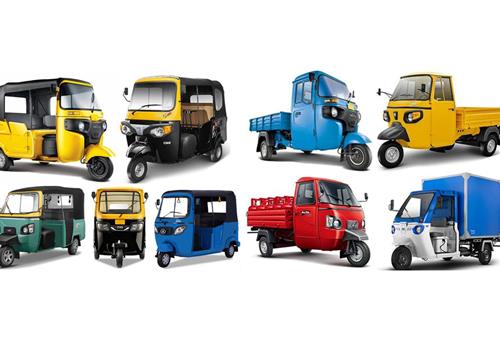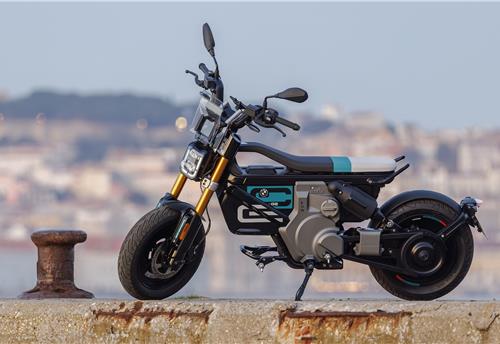Domestic CV industry likely to grow by 6-7% in FY2018: ICRA
Pent-up demand after GST, replacement cycle in CVs and healthy demand for HCVs to drive sales. Bus sector though will likely fall by 10-12 percent due to fewer orders from SRTUs, which account for 30-35 percent of sales.
Domestic commercial vehicle (CV) sales seem to be back on track since July 2017, driven by pent-up demand after GST kicked in on July 1, healthy replacement-led demand especially in the tractor-trailer segment owing to stricter implementation of CMVR regulations and pick-up in construction and mining activity, driving demand for tipper trucks.
Industry volumes prior to July had remained tepid during Q1 FY 2018 due to pre-buying in Q4 FY 2017 and fleet operators deferring new vehicle purchases in view of incoming GST regulation from July 2017. As a result, domestic CV sales contracted by 9.1 percent during Q1 FY2018 on a YoY basis with M&HCV (Truck) sales hit the most (down 32.6%), says an ICRA report. Furthermore, the contraction also came about due to limited availability of BS-IV compliant vehicles because of uncertainty related to implementation of new emission norms.
According to Subrata Ray, senior group VP, Corporate Sector ratings, ICRA, “The industry will find its momentum, aided by the increased thrust on infrastructure and rural sectors, potential implementation of fleet modernisation or scrappage program and higher demand from consumption-driven sectors and e-commerce logistic service providers, especially for LCVs and ICVs. After GST, many underlying economic indicators have started showing initial signs of stabilisation. Besides an uptick in IIP and core industries, many of the other freight-generating sectors such as steel, automobiles and port traffic are growing at a healthy pace. There has also been considerable improvement in cargo managed by the Railways during the same period. Given these considerations, ICRA expects the domestic CV industry to register a growth of 6-7 percent in FY2018.”
M&HCVs to see 2-4% growth, LCVs 14-16% in FY2018
Within the CV industry, the M&HCV (Truck) segment is likely to register a growth of 2-4 percent in FY2018 aided by pent-up demand post GST, higher budgetary allocation towards infrastructure and rural sectors and stricter implementation of regulatory norms especially related to vehicle length (for certain applications) and overloading norms. In addition, the National Green Tribunal (NGT's) thrust on phasing out old diesel vehicles along with the government's proposed vehicle modernisation program would trigger replacement-led demand.

Apart from this resumption of mining activities in select states would also continue to support demand for tippers, a segment which has outperformed the industry during the current fiscal. As companies across industries re-design their supply chain network and adopt hub-and-spoke mode of transportation, the demand for higher tonnage trucks (above 35T) is also expected to grow at a faster pace, which at present accounts for 15 percent and 30 percent of Indian truck market in terms of unit sales and tonnage, respectively.
The LCV (Trucks) given the high proportion of First Time Buyers (FTBs), Small Fleet Operators (SFOs) and dependence on rural markets, too is on a structural uptrend and has witnessed swift recovery with improvement in liquidity situation. In the near-term, replacement-led demand (following almost three years of declining sales) and expectation of stronger demand from consumption-driven sectors and E-commerce focused logistic companies would remain key growth drivers.

Over the medium-term, LCVs would also benefit from roll-out of GST and its impact on logistics sector and preference for hub-n-spoke model. Accordingly, ICRA expects this segment to grow 14-16 percent in FY 2018.
Bus sales estimated to drop 10-12%
Compared to FY2017, bus sales have declined during the current fiscal (down 20.6% in H1 FY 2018), primarily on account of lower orders inflows from State Transport Undertaking (SRTUs) owing to lower budgetary allocation from centrally sponsored schemes and their weak financial profile. Sales to SRTU segment, which accounts for almost 30-35 percent of bus sales in India, have therefore contracted sharply.
Accordingly, ICRA expects a 10-12 percent drop in bus sales during FY2018. However, the segment’s prospects remain favorable over the medium-term driven by the government’s focus on improving urban as well as rural transportation and focus towards smart cities initiatives. Over the past few years, the segment has also benefitted from healthy demand from online aggregators and staff carriers segment besides schools and colleges which remain a stable source of the bus market in India. Further the fleet replacement cycle is gradually reducing with rising customer expectations for comfortable journey which is likely to reduce average fleet age and spur replacement-led demand.

Regarding key profitability indicators, the aggregate financial performance of five leading CV OEMs is likely to see moderation in FY2018 on a YoY basis on account of a sharp decline in the M&HCV (Truck) and bus sales (in Q1), increase in discount levels and reversal in material costs because of partial recovery in steel prices and other overheads.
Furthermore, OEMs may be unable to completely pass on the cost related to BS-IV technology upgradation owing to relatively subdued demand. As a result, the aggregate OPBDIT margins are likely to remain range bound at 6.5-7.0 percent in FY 2018 in comparison to 6 percent in FY 2017. However, the aggregate RoCE would improve marginally because of certain one-time write-off and impairments in the earnings in the previous fiscal. These impairments largely pertain to impairment of loans and investments in subsidiaries and associate companies by select entities. Over the medium-term, the key sensitivity to profitability indicators of CV OEMs would continue to be the increasing competitive pressures (as foreign OEMs scale-up volumes on back of new model launches and expanding sales network) and; higher investments in developing new models and technologies (to meet next level of emission norms).
According to Ray, “Despite marginal contraction in earnings, we expect the credit profile of CV OEMs to be stable in the near to medium term on back of relatively limited capital expenditure requirements. As industry’s capacity utilisation levels remain around 50-55 percent, most OEMs are unlikely to invest in greenfield units over the next 2-3 years. This would mean that overall investments will be limited to new product development, addressing portfolio gaps and technology upgradation related to the next level of emission norms. With an eye of growing international business, some of the OEMs are also contemplating setting up assembly units overseas. ICRA estimates the CV OEMs will spend approximately Rs 3,100-3,300 crore per annum (on aggregate basis) over the medium-term in the aforementioned areas.
RELATED ARTICLES
Mahindra XUV300 tops 250,000 sales ahead of XUV3XO reveal
The popular compact SUV, which ranks among India’s Top 20 utility vehicles for FY2024, is among the SUVs which have powe...
Bajaj Auto sells 463,413 three-wheelers in FY2024, increases market share to 67%
Three-wheeler market leader Bajaj Auto increases its dominance in both passenger and cargo model sales with best-ever fi...
SCOOP! TVS Motor begins exporting made-in-India BMW CE 02 e-scooter
TVS Motor Co, which has a longstanding strategic partnership with BMW Motorrad since April 2013 for manufacture of the 3...





 By Autocar Pro News Desk
By Autocar Pro News Desk
 02 Nov 2017
02 Nov 2017
 5827 Views
5827 Views












